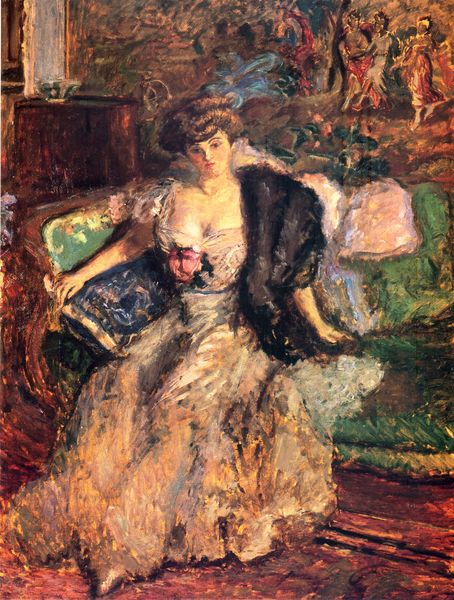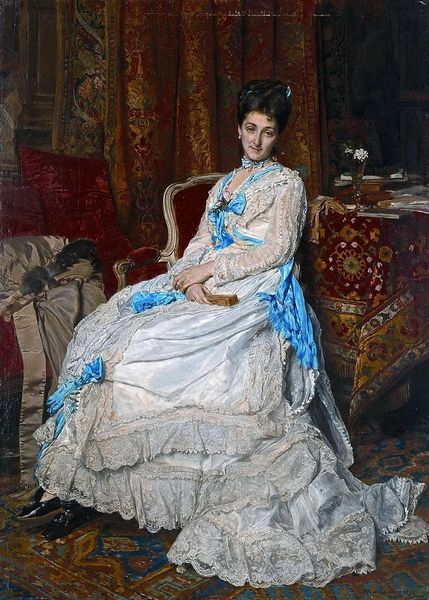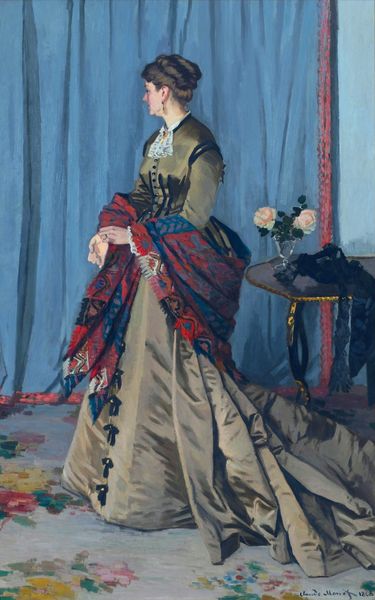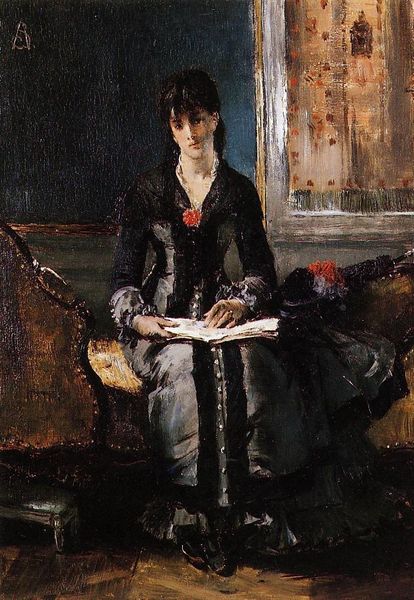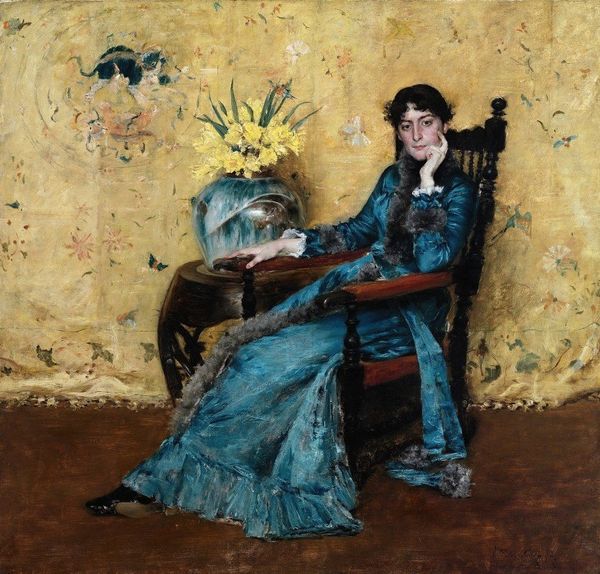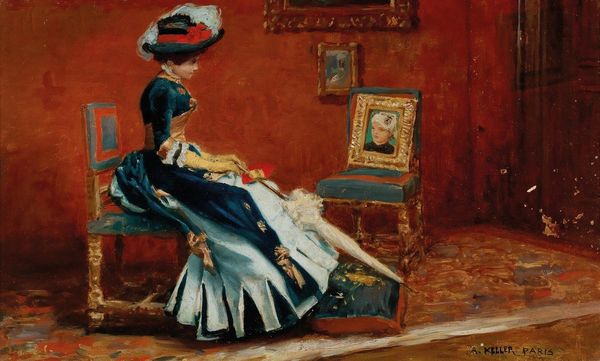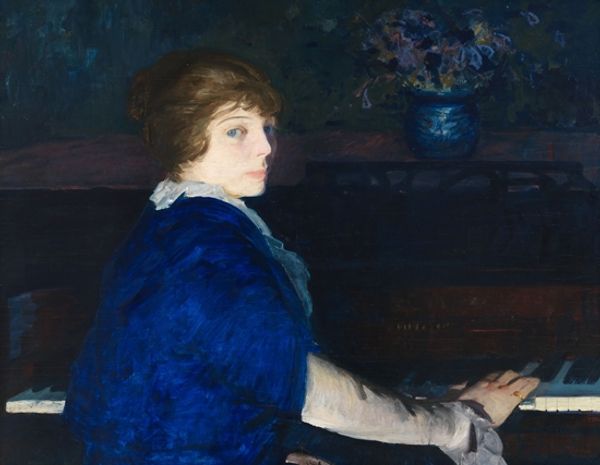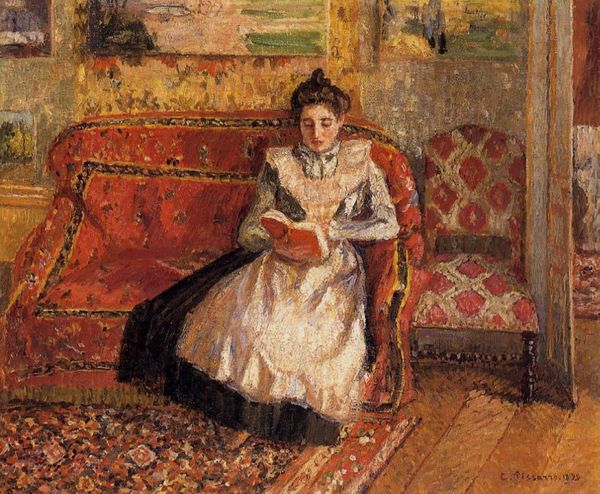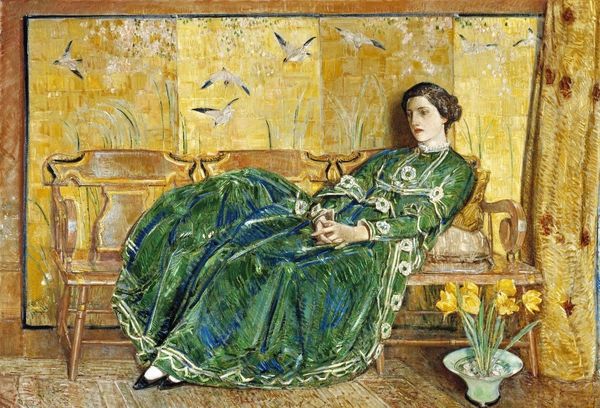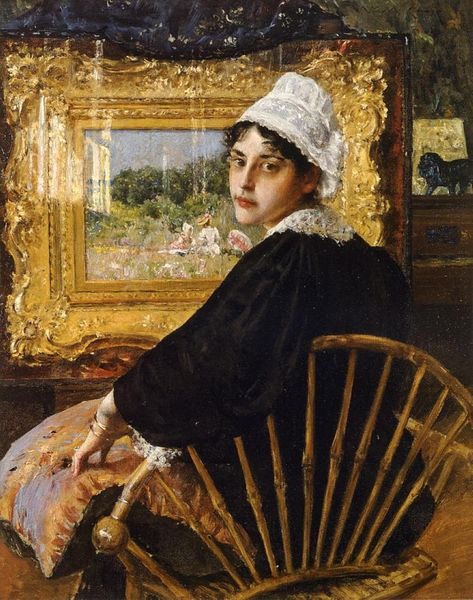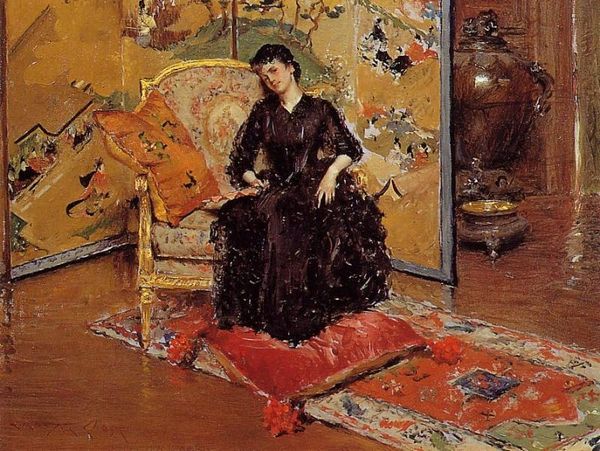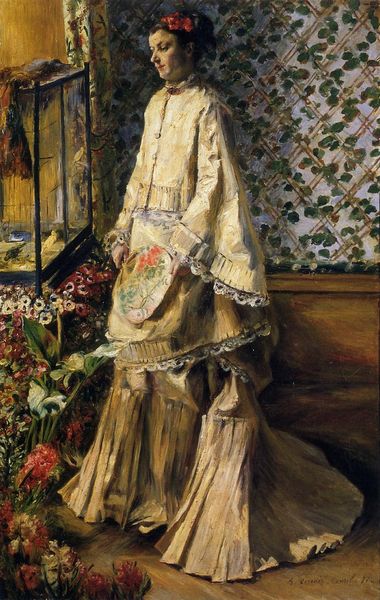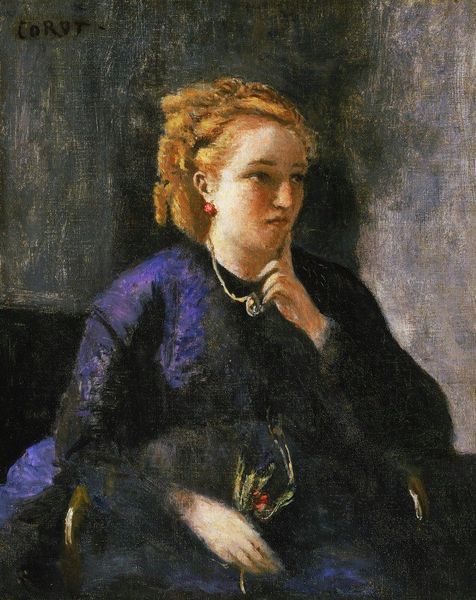
Copyright: Public domain
Editor: This is Boris Kustodiev's "Portrait of Y.E. Kustodieva," painted in 1920, using oil paint. The woman’s face feels calm amidst this explosion of pattern and colour. What strikes you most about this work? Curator: The controlled palette creates an unsettling sense of domestic tension in post-revolutionary Russia, even within a familial portrait. The intense, clashing patterns around her and the somber expression evoke a certain anxiety. How does Kustodiev frame his wife within this specific cultural and historical moment? Editor: It seems to put the figure at odds with her surrounding context. Does her direct gaze challenge the traditional passive role often assigned to women in portraiture, and what statements do you think the painting makes about her place within that society? Curator: Precisely. Considering the Russian Revolution was only three years prior, this painting highlights a period of immense social and political upheaval, specifically impacting women’s roles and visibility. Note also that this is his wife. This gaze might be the artist’s admiration and anxiety during a period when many social structures had collapsed. Editor: It makes me think about what her identity means, both publicly and privately. Almost as if, despite the change of the country, a feeling of dread and uncertainty remained within the private space of the house. I hadn’t really considered the social upheaval being presented in her gaze and the space around her, but now I can totally see it. Thank you for illuminating this artwork! Curator: Absolutely. Seeing art as a product and agent of change provides insight into both its historical and contemporary significance.
Comments
No comments
Be the first to comment and join the conversation on the ultimate creative platform.
